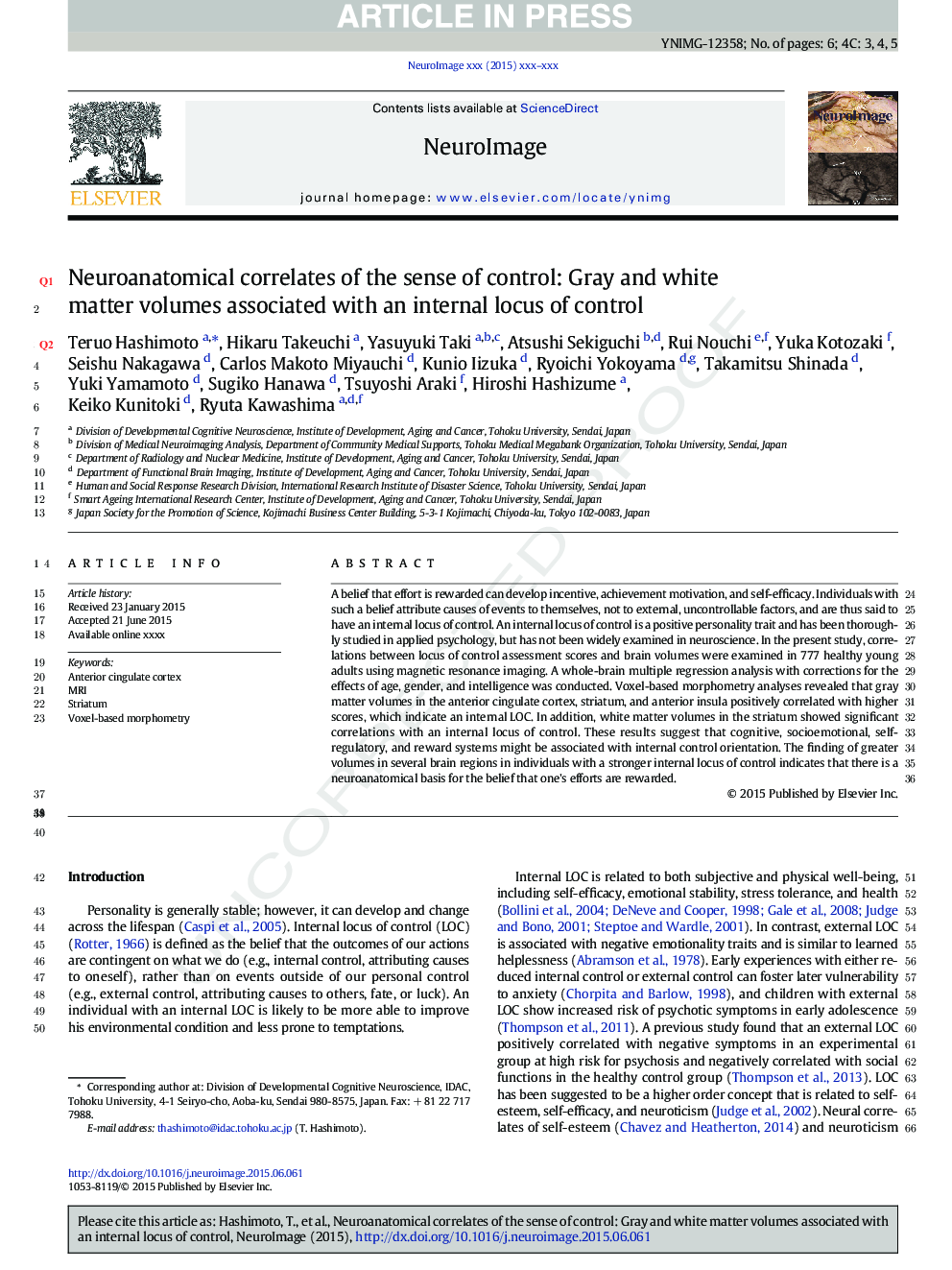| Article ID | Journal | Published Year | Pages | File Type |
|---|---|---|---|---|
| 6024810 | NeuroImage | 2015 | 6 Pages |
Abstract
A belief that effort is rewarded can develop incentive, achievement motivation, and self-efficacy. Individuals with such a belief attribute causes of events to themselves, not to external, uncontrollable factors, and are thus said to have an internal locus of control. An internal locus of control is a positive personality trait and has been thoroughly studied in applied psychology, but has not been widely examined in neuroscience. In the present study, correlations between locus of control assessment scores and brain volumes were examined in 777 healthy young adults using magnetic resonance imaging. A whole-brain multiple regression analysis with corrections for the effects of age, gender, and intelligence was conducted. Voxel-based morphometry analyses revealed that gray matter volumes in the anterior cingulate cortex, striatum, and anterior insula positively correlated with higher scores, which indicate an internal LOC. In addition, white matter volumes in the striatum showed significant correlations with an internal locus of control. These results suggest that cognitive, socioemotional, self-regulatory, and reward systems might be associated with internal control orientation. The finding of greater volumes in several brain regions in individuals with a stronger internal locus of control indicates that there is a neuroanatomical basis for the belief that one's efforts are rewarded.
Related Topics
Life Sciences
Neuroscience
Cognitive Neuroscience
Authors
Teruo Hashimoto, Hikaru Takeuchi, Yasuyuki Taki, Atsushi Sekiguchi, Rui Nouchi, Yuka Kotozaki, Seishu Nakagawa, Carlos Makoto Miyauchi, Kunio Iizuka, Ryoichi Yokoyama, Takamitsu Shinada, Yuki Yamamoto, Sugiko Hanawa, Tsuyoshi Araki, Hiroshi Hashizume,
